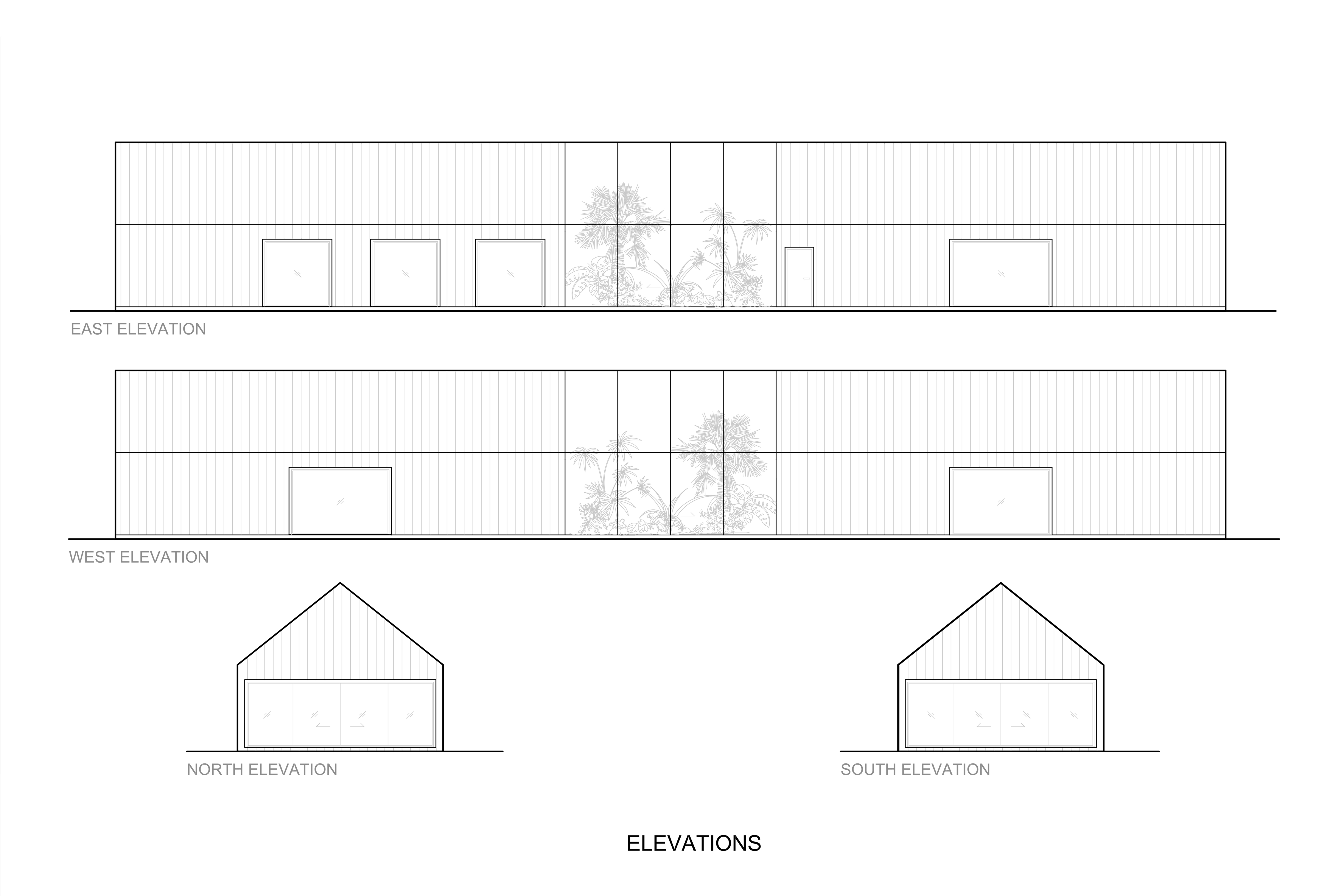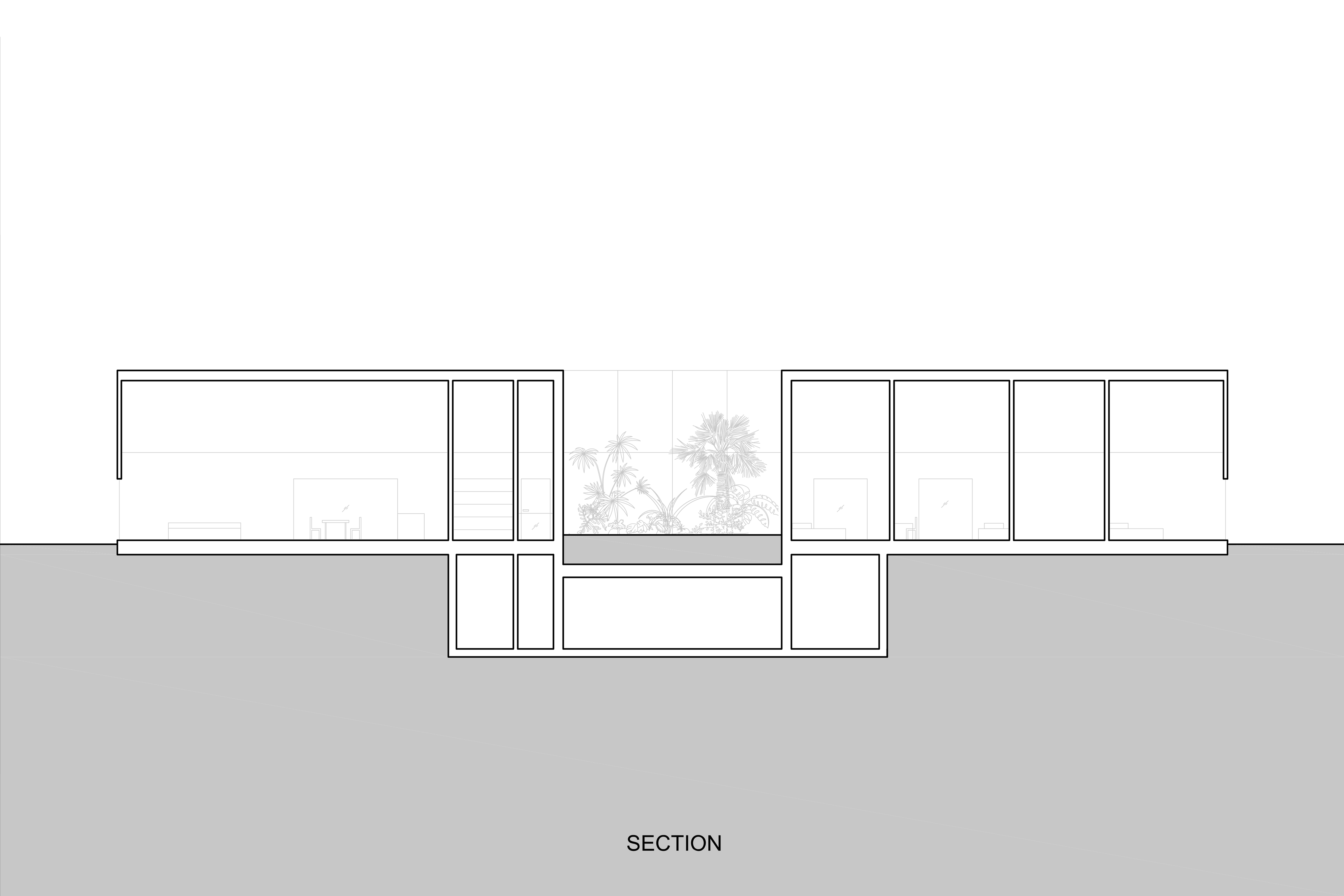7 T H L I N E H O U S E
The motivation for the form and layout of 7th Line House was to strengthen food security and act as a means of true sustainability. The client requested a design whereby he could grow his own food, even during the harsh climate of the winter months. In a time where so much of our food is transported from all corners of the globe, and supply chain issues threaten availability, 7th Line House acts as a statement to the value of sourcing and growing your food locally; in this case, it is in the centre of the home.
The house is split into two zones, with a greenhouse acting as an acoustic separation between the noisier spaces (living room, kitchen, dining room) and the quieter areas of the house (bedrooms, study). The greenhouse operates independently from the main dwelling spaces and functions just like a traditional greenhouse, generating humidity from the plants and solar heat gain from the ‘greenhouse effect’ in the traditional glass enclosure. Rainwater and snow melt are collected from the roof of the house and used to irrigate the plants. The space is intended to be used year-round for growing and the orientation of the house allows for maximum exposure from the sun throughout the day. As an added feature, the greenhouse is to be used as a meditative space for mental sustainability and a verdant oasis to alleviate seasonal affective disorder (SAD) during the winter months.
![]()
The motivation for the form and layout of 7th Line House was to strengthen food security and act as a means of true sustainability. The client requested a design whereby he could grow his own food, even during the harsh climate of the winter months. In a time where so much of our food is transported from all corners of the globe, and supply chain issues threaten availability, 7th Line House acts as a statement to the value of sourcing and growing your food locally; in this case, it is in the centre of the home.
The house is split into two zones, with a greenhouse acting as an acoustic separation between the noisier spaces (living room, kitchen, dining room) and the quieter areas of the house (bedrooms, study). The greenhouse operates independently from the main dwelling spaces and functions just like a traditional greenhouse, generating humidity from the plants and solar heat gain from the ‘greenhouse effect’ in the traditional glass enclosure. Rainwater and snow melt are collected from the roof of the house and used to irrigate the plants. The space is intended to be used year-round for growing and the orientation of the house allows for maximum exposure from the sun throughout the day. As an added feature, the greenhouse is to be used as a meditative space for mental sustainability and a verdant oasis to alleviate seasonal affective disorder (SAD) during the winter months.






